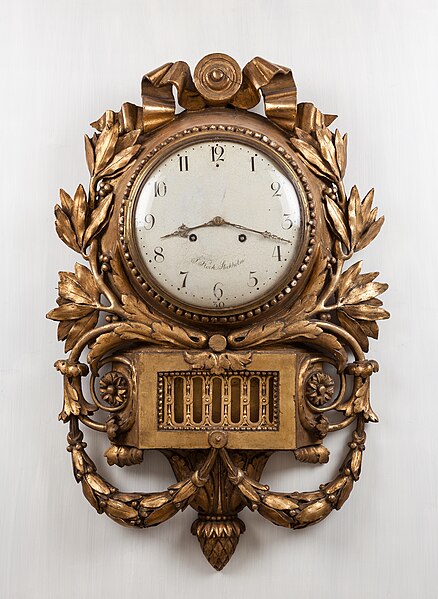An atomic clock is a clock that measures time by monitoring the resonant frequency of atoms. It is based on atoms having different energy levels. Electron states in an atom are associated with different energy levels, and in transitions between such states they interact with a very specific frequency of electromagnetic radiation. This phenomenon serves as the basis for the International System of Units' (SI) definition of a second:
The second, symbol s, is the SI unit of time. It is defined by taking the fixed numerical value of the caesium frequency, , the unperturbed ground-state hyperfine transition frequency of the caesium-133 atom, to be 9192631770 when expressed in the unit Hz, which is equal to s−1.
NIST physicists Steve Jefferts (foreground) and Tom Heavner with the NIST-F2 caesium fountain atomic clock, a civilian time standard for the United States
The master atomic clock ensemble at the U.S. Naval Observatory in Washington, D.C., which provides the time standard for the U.S. Department of Defense. The rack mounted units in the background are Microsemi (formerly HP) 5071A caesium beam clocks. The black units in the foreground are Microsemi (formerly Sigma-Tau) MHM-2010 hydrogen maser standards.
Louis Essen (right) and Jack Parry (left) standing next to the world's first caesium-133 atomic clock in 1955, at the National Physical Laboratory in west London.
A caesium atomic clock from 1975 (upper unit) and battery backup (lower unit)
A clock or chronometer is a device that measures and displays time. The clock is one of the oldest human inventions, meeting the need to measure intervals of time shorter than the natural units such as the day, the lunar month, and the year. Devices operating on several physical processes have been used over the millennia.
An analog pendulum clock made around 18th century
Casio F-91W digital watch, one of the most popular watches ever
Simple horizontal sundial
The flow of sand in an hourglass can be used to keep track of elapsed time.








